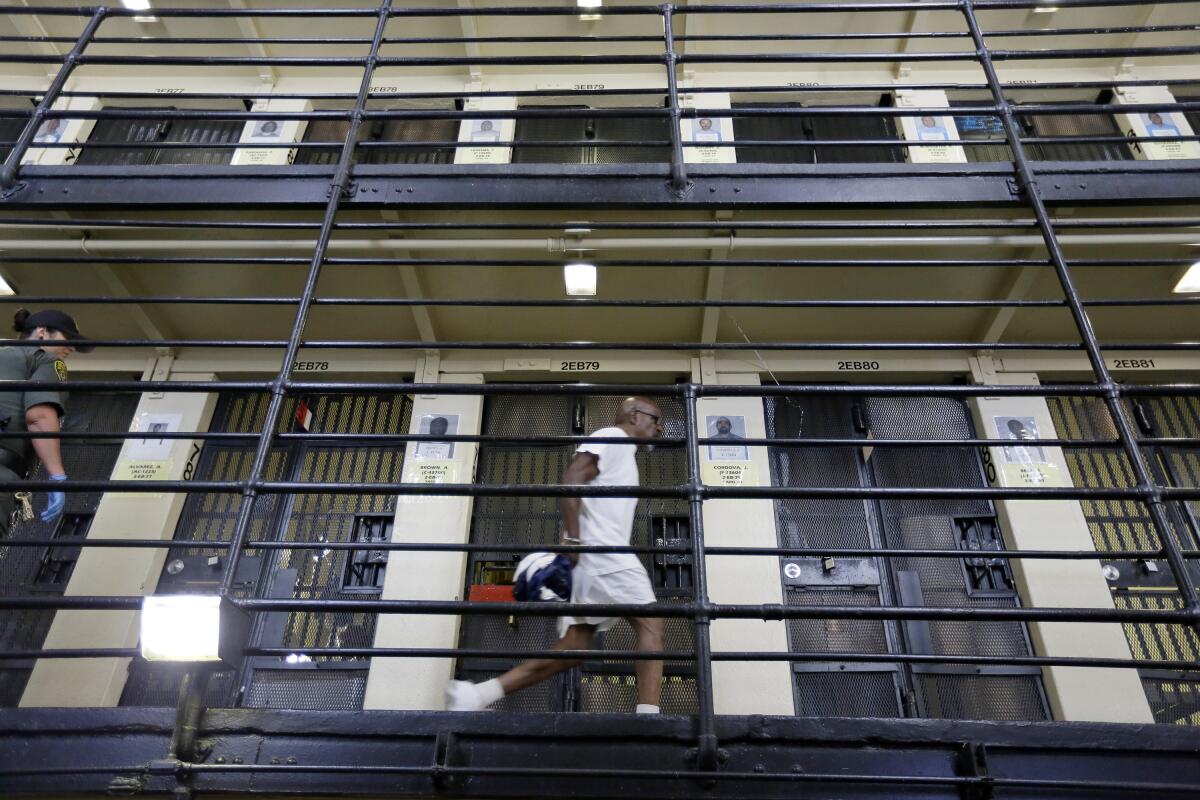Dismantle death row, but don’t stop there

- Share via
The dismantling of California’s death row may well be more symbolic than substantive. Soon after he took office in 2019, Gov. Gavin Newsom placed a moratorium on executions but did not commute the sentences of the nearly 700 condemned men awaiting execution (or death by natural causes) at San Quentin State Prison in Marin County or the 21 women at the Central California Women’s Facility in Chowchilla.
The term “death row” applies to the corridors in which inmates sentenced to die are housed. It’s really just a place, and not the entire mechanism of condemnation, death vigils and execution. Getting rid of death row does not rid California of the death penalty.
So it’s important to recognize what Newsom did and did not do with his statement this week that condemned prisoners would be moved to other prisons within two years.
The plan, rather than being an unexpected new initiative, follows up on a provision in a ballot measure to alter the process of capital punishment, supposedly to speed up executions. The measure also allows inmates who were sentenced to death to be transferred to other facilities to take part in rehabilitation programs, and to take prison jobs in order to pay restitution for their crimes.
What kind of society clusters people together and then charges them money for hygiene?
That, at least, is a positive step away from the death-row culture of simply waiting for death, even if no condemned prisoner is expected ever to make use of their rehabilitation outside of prison.
Capital punishment is an immoral exercise of state power and an offense against humanity regardless of how horrible the crimes committed by the condemned. Societies have a right to protect themselves by punishing egregious crimes, and especially murders. But there is no evidence that state killing of killers dissuades other horrific acts, and makes all of us killers in the process.
So it’s not enough to dismantle death row and scatter its condemned occupants among the state’s other prisons. The death penalty itself should be dismantled. Newsom’s moratorium, while praiseworthy, could easily be rescinded by his successor.
He could go further by commuting the sentences of current inmates awaiting execution to life in prison, but even then, that does nothing to stop prosecutors, judges and juries to keep the conveyor belt of death running.
Like the American dream, the California dream of fresh starts and fair play is undermined by rules that protect privilege and punish poverty.
In 2016, voters narrowly ratified the death penalty by adopting Proposition 66 — and defeating Proposition 62, a counterpart that would have ended capital punishment in California. While running for governor two years later, Newsom said he wanted to put that question to voters again because the margin of support for the death penalty has declined with each successive ballot measure. He hasn’t followed up. Perhaps it’s time he did.
Still, execution is wrong, whether or not Californians keep it as part of the state law. And sentencing people to death without following through — no one in this state has been put to death since 2006 — becomes just one more part of the pointless ritual.
Meanwhile, when we close San Quentin’s death row, we ought to close the rest of the prison, too. It is old and decrepit, and it occupies one of the most valuable and picturesque pieces of real estate in California. Its design contributed to the deadly spread of COVID-19 in 2020. The state will still need prisons, but we overbuilt our imprisonment infrastructure and have more than enough space for those who committed capital crimes and others as well.
Newsom promised to close some prisons, and now Deuel Vocational Prison in Tracy has been deactivated. One of two state prisons in Susanville is also slated for closure, pending the outcome of litigation. It’s time to add San Quentin — and not just its death row — to the list.
More to Read
A cure for the common opinion
Get thought-provoking perspectives with our weekly newsletter.
You may occasionally receive promotional content from the Los Angeles Times.










